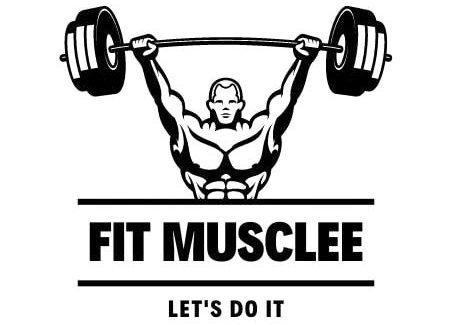Here is your complete guide to pull up workout.
Introduction to Pull Up Workout
A pull up workout is one of the most powerful ways to enhance your upper body strength. Whether you are just starting or a seasoned fitness enthusiast, incorporating a pull up workout into your routine builds muscle, burns fat, and improves your overall fitness. The pull up workout targets multiple muscle groups and is a versatile exercise adaptable to all fitness levels. This guide will explore everything about the pull up workout including benefits, types, routines, progression, and common mistakes so you can maximize your results effectively. By the end, you’ll have all the tools to integrate a pull up workout into your exercise regimen confidently.
What is a Pull Up Workout?
A pull up workout consists of various exercises centered around pull ups, a bodyweight movement where you pull your entire body up until your chin clears a bar. Pull ups primarily engage the back, biceps, shoulders, and core muscles. Known for their effectiveness, pull ups are regarded as a fundamental upper body strength builder. Variations of pull ups exist and can be tailored to fitness levels, making the pull up workout accessible and scalable.
Benefits of a Pull Up Workout
Engaging in a regular pull up workout unlocks multiple benefits:
- Muscle Strength and Growth: Targets the large back muscles (latissimus dorsi) and biceps, promoting muscular development.
- Fat Burning: As a compound movement, it burns calories and aids in fat loss.
- Improved Posture: Strengthens muscles responsible for posture support.
- Grip Strength: Enhances forearm and hand strength, beneficial across many activities.
- Joint Health and Stability: Promotes healthy shoulders and elbows, reducing injury risk.
| Benefit | Description | Impact |
|---|---|---|
| Muscle Strength | Builds upper body and core muscles | Improves daily functional tasks |
| Metabolism Boost | Increases calorie burn | Aids in fat loss |
| Joint Health | Enhances shoulder and elbow stability | Reduces injury risk |
| Grip Strength | Strengthens forearms | Improves performance in other lifts |
Anatomy of a Pull Up Workout
Understanding which muscles are activated during a pull up workout helps improve form and results:
- Latissimus Dorsi: Main muscles pulling your body up.
- Biceps: Assist with the pulling motion.
- Trapezius and Rhomboids: Stabilize shoulder blades.
- Forearms: Crucial for grip strength.
- Core: Engaged to maintain body tension.
The movement involves two phases:
- Concentric phase: Pulling your body upwards.
- Eccentric phase: Lowering yourself back with control.
Different Types of Pull Up Workouts
Variety in your pull up workout enhances progress and prevents plateaus. Here are common variations:
- Standard Pull Ups: Overhand grip, focus on back and biceps.
- Chin Ups: Underhand grip, targets biceps more.
- Negative Pull Ups: Focus on slowly lowering from the top.
- Assisted Pull Ups: Using resistance bands or machines.
- Weighted Pull Ups: Adding extra weight for more resistance.
- Jumping Pull Ups: Using momentum to assist upward movement.
- Isometric Holds: Holding position at top or flexed arm hang.
| Variation | Difficulty Level | Target Muscles | Suitable For |
|---|---|---|---|
| Standard Pull ups | Intermediate | Back, biceps, core | Intermediate & advanced |
| Chin ups | Beginner-Intermediate | Biceps, back | Beginners & intermediate |
| Negative Pull ups | Beginner | Back, biceps | Beginners |
| Assisted Pull ups | Beginner | Back, biceps, core | Beginners |
| Weighted Pull ups | Advanced | Back, biceps, core | Advanced lifters |
| Jumping Pull ups | Intermediate | Full upper body | Intermediate |
Pull Up Workout Routine Examples
Beginner Routine (3 times/week)
- Dead hangs (3 sets, 20 seconds)
- Assisted pull ups with resistance bands (3 sets of 6-8 reps)
- Negative pull ups (3 sets of 5 reps, 5-second descent)
- Scap pull ups (3 sets of 10 reps)
Intermediate Routine
- Standard pull ups (4 sets of max reps)
- Chin ups (4 sets of max reps)
- Jumping pull ups (3 sets of 8 reps)
- Isometric hold at top (3 sets, 10 seconds)
Advanced Routine
- Weighted pull ups (4 sets of 6-8 reps)
- Explosive pull ups (3 sets of 6 reps)
- Slow eccentric pull ups (3 sets of 6 reps, 10-second descent)
- Flexed arm hang (3 sets, to failure)
Weekly Routine Overview by Level
| Level | Frequency | Key Exercises | Focus |
|---|---|---|---|
| Beginner | 3 days | Assisted pull ups, negatives, hangs | Build foundational strength |
| Intermediate | 4 days | Standard pull ups, chin ups, jumping | Increase reps & control |
| Advanced | 4-5 days | Weighted, explosive, slow eccentrics | Max strength & endurance |
How to Progress in Your Pull Up Workout
Progression ensures continued gains:
- Track reps and sets for each session.
- Prioritize rest and recovery to avoid overtraining.
- Use progressive overload by adding weight or reps weekly.
- Maintain perfect form before increasing difficulty.
- Address plateaus by changing grip, adding negatives or isometric holds.
Common Mistakes to Avoid When Doing a Pull Up Workout
Using Momentum Instead of Muscle Strength
One of the most frequent mistakes is swinging the legs or using body momentum to get above the bar. This reduces the workout’s effectiveness and increases injury risk. Always pull yourself upward using muscle strength alone with controlled movement.
Not Using Full Range of Motion
Many people do partial pull ups, stopping short or dropping suddenly, which limits muscle activation and strength gains. For best results, start every rep from a dead hang and pull until your chin (or ideally chest) passes the bar, then lower fully with control.
Incorrect Grip and Elbow Position
Using a grip that is too wide or too narrow can strain shoulders or reduce efficiency. The optimal grip is usually shoulder-width. Also, elbows should be slightly in front of the torso for biomechanical advantage, not directly to the sides.
Neck and Head Positioning Errors
Straining the neck forward (“gooseneck”) to clear the bar is common but incorrect. Keep your head and neck neutral throughout the movement to avoid discomfort and injury.
Poor Posture: Hunched Upper Body
Allowing your back and chest to cave in makes the exercise biomechanically harder and less effective. Maintain a natural thoracic extension with chest leading the movement to engage the right muscles.
Lack of a Structured Training Plan
Random pull up practice without tracking reps or following progression leads to slow or no progress. A goal-oriented training plan with regular sessions is essential.
Inconsistent Training Frequency
Pull up strength improves with consistent work. Skipping sessions or training sporadically slows progress. Aim for 2-4 pull up workouts per week depending on your level.
Ignoring Rest and Recovery
Not giving your muscles time to recover results in fatigue, plateaus, and injury risk. Adequate rest between sessions is crucial for long-term gains.
Avoiding these mistakes will enhance the effectiveness of your pull up workout, prevent injury, and accelerate your strength development.## Common Mistakes to Avoid When Doing a Pull Up Workout
Pull Up Workout Equipment and Setup
Setting up correctly improves workout quality:
- Pull Up Bars: Doorway, wall-mounted, or outdoor bars.
- Resistance Bands: Aid assisted pull ups.
- Weight Belts: For adding resistance in advanced workouts.
- Chalk and Gloves: Improve grip and reduce slipping.
| Equipment | Purpose | Recommended Use |
|---|---|---|
| Doorway Pull-up Bar | Convenient home training | Beginners to advanced |
| Resistance Bands | Assistance and support | Beginners |
| Weight Belts | Add load for strength gains | Advanced users |
| Gloves & Chalk | Better grip and comfort | All levels |
Nutrition Tips to Support Your Pull Up Workout
Nutrition boosts your workout results:
- Consume adequate protein for muscle repair and growth.
- Stay hydrated for peak performance and muscle function.
- Balanced meals with carbs and fats for sustained energy.
- Consider supplements like creatine for strength gains.
Best Tips for Pull Up Workout Progression
Choose the Right Progression Exercises
Start with easier movements like scapular pulls, dead hangs, and inverted rows to build foundational back and grip strength. Progress to assisted pull ups with bands or machines, then to negatives (slow lowering). Once strong enough, move to unassisted standard pull ups and eventually weighted variations.
Grease the Groove Technique
Perform submaximal reps frequently throughout the day without reaching failure. For example, if your max is 5 pull ups, do sets of 2-3 reps multiple times daily with adequate rest. This improves neuromuscular coordination and makes the pull up movement more efficient.
Track Your Reps and Rest Periods
Use a training plan like a 30-day progression:
- Week 1: Dead hang and inverted rows
- Week 2: Increase hang time and add scapular pull ups
- Week 3 & 4: Include banded and negative pull ups with controlled reps
Use Volume and Intensity Variations
Incorporate low-rep, high-volume training sessions as well as ladder sets (repeated sets increasing or decreasing reps) to build endurance and strength. Gradually reduce rest time between sets to push gains.
Integrate Dynamic and Isometric Exercises
Select one challenging dynamic pull up variation (e.g., standard or jump pull ups) and one isometric hold (e.g., flexed arm hang) to train both movement and position strength. Aim for sets lasting 30 seconds for isometric holds.
Rest and Recovery are Crucial
Allow at least 48 hours between intense pull up workouts to avoid overtraining. Listen to your body and adjust frequency based on recovery status.
FAQs about Pull Up Workout
How many pull ups should I do in a workout?
Depends on your level; beginners aim for sets of 3-5 reps, more advanced can do multiple sets of 10+.
Read Also: Popcorn Gluten Free.
How often should I do pull up workouts?
2-4 times weekly with rest days for recovery is ideal.
Read Also: Chest Workouts with Cables.
Can pull ups help lose belly fat?
They build muscle and boost metabolism but spot fat loss isn’t possible.
Read Also: Does Stretching Burn Calories.
How can beginners do their first pull up?
Start with negatives, assisted pull ups, and build grip and back strength.
Read Also: How to Stretch Chest Muscles.
Are pull ups bad for your shoulders?
No, if done with correct form. Poor technique can cause shoulder strain.
Read Also: Beginner Powerlifting Routine.
How long until I can do 10 pull ups?
With consistent training, 4-8 weeks is common depending on starting strength.
Read Also: Arm Workout Machines.
Conclusion
The pull up workout is a cornerstone exercise for building upper body strength, improving posture, and increasing functional fitness. By understanding the variations, benefits, and progression methods outlined, beginners and advanced athletes alike can incorporate pull ups effectively into their routines. Consistency, good form, and supporting nutrition will ensure maximum gains and a healthier, stronger body.
Read Also: Calf Workout Machine.
References and Resources Used in This Article:
- Pull ups benefits | 60+ Statistics & Facts [Research Review].
- Electromyographical Comparison of a Traditional Pull-up and Variations.
- Pull-Up Performance Is Affected Differently by the Muscle Contraction Regimens.
- Pull-Up Techniques for Everyone – The New York Times.
- Get Your First Pull-Up (in 30 Days) – Nerd Fitness.
- Pull Ups For Beginners – PureGym Blog.
- Ultimate Pull-Up Plan Strength Training Program PDF – Women’s Health.
- How to do a Pull Up: A Step-by-Step Guide – Move With Us.

